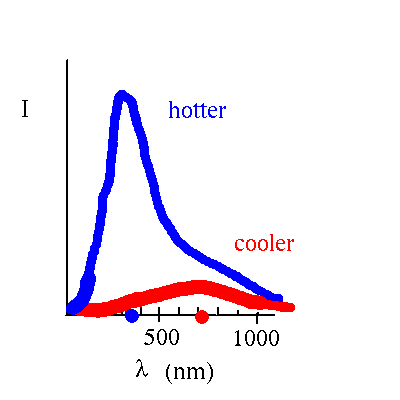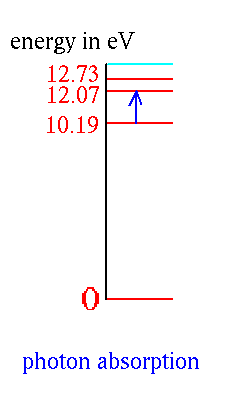Determining the temperature of a star from its color and its spectrum
Stars have different colors. For instance, the star Betelgeuse
in Orion's shoulder is redder than most stars. (Have a look.)

Color and temperature
The reason for the different colors is that the light is (approximately)
blackbody radiation, which
is not sensitive to the details of the star's composition but is
sensitive to the temperature of the star.

Thus astronomers can determine the surface temperature of a star
by measuring its color. (To do this quantitatively, they commonly
use three filters that transmit light in three different wavelength
ranges. Then they take the ratio of the intensity of the light
that gets through, say, the shortest wavelength filter to the
intensity of the light that gets throught the medium wavelength
filter.)
Spectral classification
Another way to measure the surface temperature is to examine in detail the
spectral lines in the starlight. These details show something
about composition, but they also show something about temperature.
Consider the imaginary element Oregonium, which is found in the
photosphere of all imaginary stars. We look for absorption lines
from Oregonium.
- If it is too hot, atoms of Oregonium will be partially ionized.
Oregonium ions have different energy levels from neutral Oregonium
atoms. In the hot star, there are no neutral Oregonium atoms, so there
are no absorption lines corresponding to neutral Oregonium.
- If the star is too cool, then all the Oregonium atoms are in
their ground states. There are absorption lines corresponding to jumps
from the ground state to higher energy states. But there are no lines
corresponding to jumps from one higher energy state to another.
Here, for instance, is an event that cannot happen for hydrogen if all the atoms
of hydrogen are in their gound state:

The classification by means of spectra was the result of a big project
at Harvard. The Henry Draper Catalogue published around 1920,
listed 224,300 stars that had been classified by astronomer Annie Jump
Cannon.
The OBAFGKM classification
Astronomers commonly refer to stars by their spectral type
in a scheme that arose from this project:
- O 28,000 K - 50,000 K.
- B 10,000 K - 28,000 K.
- A 7,500 K - 10,000 K.
- F 6,000 K - 7,500 K.
- G 5,000 K - 6,000 K.
- K 3,500 K - 5,000 K.
- M 2,500 K - 3,500 K.
ASTR 122 course home page
Updated 22 Octobber 2007
Davison E. Soper, Institute of Theoretical Science,
University of Oregon, Eugene OR 97403 USA


